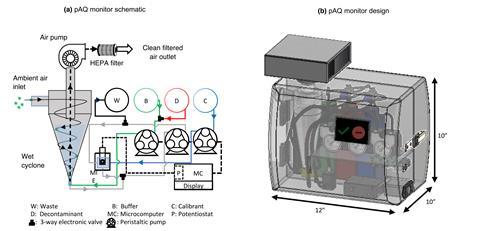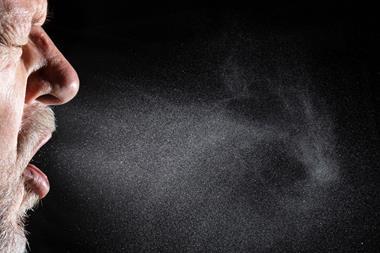A new pathogen air quality monitor can detect Sars-CoV-2 virus in the air in real time. The researchers who developed the proof-of-concept device say that it is suited for surveillance of Sars-CoV-2 variants in indoor environments like hospitals and patient isolation rooms, and could be adapted for the detection of other respiratory pathogens of interest.
The monitor combines a high flow wet cyclone air sampler and a nanobody-based biosensor. Air that enters the sampler comes into contact with a rotating film of phosphate-buffered saline solution, which traps any virus particles before being pumped to the biosensor.

The researchers adapted an existing biosensor used for detecting amyloid beta as a marker for Alzheimer’s disease by introducing a llama-derived nanobody that recognises the spike protein of the Sars-CoV-2 virus. The nanobody is covalently bonded to the surface of an electrode and can detect oxidation of tyrosine amino acids present in the spike protein, which enables the researchers to measure the amount of virus in the sample.
The air sampler performance was tested in the lab inside a sealed, room-sized chamber, as well as inside the homes of two Covid-19-positive patients. The monitor’s sensitivity is comparable to that of other recently developed rapid biosensors used for detecting viruses in saliva and nasal swabs.
References
Puthussery et al, Nat. Comms., 2023, DOI: 10.1038/s41467-023-39419-z

















No comments yet